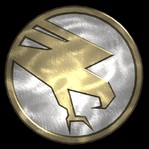I love how the mathematician ends the interview by saying
[this] may help us uncover something beautiful, or maybe even useful.
It’s great seeing how these people work with science for the sake of science itself, because it’s beautiful, not because they suspect that they’ll find something that immediately changes the world. It makes me think that they see themselves more as artists than as engineers, and I think that if you have a career in science it’s a healthy approach to have. Most scientists never have an “Einstein-like” breakthrough, but contribute pieces to the puzzle that may lead to breakthroughs long after they’re gone. Being satisfied with that is probably key to having peace of mind as a scientist.
Can this have an influence on the security of certain cryptographic functions?
Yes absolutely it can.
Disclaimer: This is based on a gut feeling and no actually knowledge of the topic.
Yup, the proof of the strong version (the full Reimann hypothesis) very likely lets you brute force large prime factors. This is a slightly stronger weak version, but has lots of interesting new bits in a field that has been stagnant for a long time. Those functions were going away on Q-day anyway, and we already have functions that are resistant to both, but now there are two Damoclean swords hanging over all that encrypted data the NSA and others have been hoovering up for years.
I like this rundown better…
Sensational claims require sensational evidence.
Carl Sagan, probably
I looked at the image and thought it looked like the golden spiral.
But it isn’t.
Then I thought it looked like an optical illusion. The ones where when you tilt it you can see a word.
I tilted the image sideways. (To the right)
It looks like a toroid.




